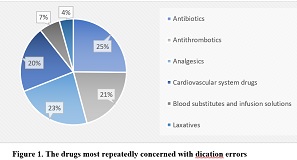DESCRIPTION OF RISK LEVELS OF GADGET ADDICTION, BULLYING BEHAVIOR, AND DRUG ABUSE IN ADOLESCENTS

Downloads
Gadgets can be interpreted as a tool that can easily be connected to the internet. If the use of gadgets can be done wisely, humans will get many benefits from using gadgets. But if the use of gadgets cannot be controlled, it will have a negative impact. One of the negative effects obtained is dependence or addiction to the gadget itself. Apart from the use of gadgets, bullying is also common today. Approximately three million teenagers become drug abusers in Indonesia. The data was collected using primary data in the form of a questionnaire to collect data on gadget addiction, bullying behavior, and drug abuse among junior high school adolescents at MTs Nahdlatul Wathon Licin. This was a descriptive observational study. The population was students in 8th-9th grades at MTs Nahdlatul Wathon Licin. Sampling was done by total sampling. The number of samples obtained was 93 people. Data were analyzed using descriptive statistical methods which are presented in the form of frequency distribution tables. It was found that 8.6% of respondents had a high risk of gadget addiction, 48.4 % of respondents have a high level of bullying behavior, and 2.2% of respondents are addicted to drugs.
Sherlyanita, AK & Rakhmawati, NA. 2016. Influence and activity patterns of internet use and social media on students of SMPN 52 Surabaya. Journal of Information Systems Engineering and Business Intelligence, 2 (1).
Wardhani, FP. 2018. Student Gadget Addiction Behavior in the Perspective of Respectful Framework. Counselor, 7 (3)
Nur'artavia, M. 2017. Student Characteristics of Drug Abuse and Types of Drugs Used in Surabaya. The Indonesian Journal of Public Health, 12 (1).
BNN. 2018. Preventing the Entry of Drug Stores to Indonesian Politics . BNN. Available at: https://bnn.go.id/preventing-bandarnarkoba- entry to-Indonesian-political scene /. [Accessed 10 August 2019]
Hardanti, HA, Nurhidayah, I. & Rahayu, SY 2013. Factors Behind Addictive Behavior Playing Online Games in School- aged Children . Padjadjaran Nursing Journal , 1 (3).
Ariesto, A. 2009. Implementation of the Antibullying Teacher Empowerment Program. University of Indonesia.Available at: http://lib.ui.ac.id/file?file=digital/123656- SK% 20006% 2009% 20Ari% 20p% 20-% 20 Implementation% 20programLiteratur.pdf [Accessed 10 August 2019]
Yuniartiningtyas, F. 2012. The Relationship Between Parenting Patterns and Personality Types with Bullying Behavior in Schools in Junior High School Students. Makassar : Public university.
Azzahra, A. & Haq, ALA 2019. Intention of Bullying: A Phenomenology Study of Bullying in Schools. Psycho Idea , 17 (1).
Carroll, A., Houghton, S., Durkin, K., & Hattie, JA. 2009. Adolescent Reputations and Risk. New York: Springer.
Fitriani, O., Handayani, S. & Asiah, N. 2017. Determinants of drug abuse in adolescents at SMAN 24 Jakarta. ARKESMAS, 2 (1).
Copyright (c) 2020 Rama Bagus Anandayudha, Calseries Rizki Noveriana, Ewin Wulandari, Felicia Alvita Tjahjono, I Wayan Weda Wisnawa, Zahra Fadhilazka Tiara, Laprianika Retha Haphita Sari, Nurin Kusuma Dewi, M. Ramadhan Alkausar, Binnari Augustya, Anisa Rahma Dewayani, Azimatul Karimah

This work is licensed under a Creative Commons Attribution-ShareAlike 4.0 International License.
- The journal allows the author to hold the copyright of the article without restrictions.
- The journal allows the author(s) to retain publishing rights without restrictions.
- The legal formal aspect of journal publication accessibility refers to Creative Commons Attribution Share-Alike (CC BY-SA).
- The Creative Commons Attribution Share-Alike (CC BY-SA) license allows re-distribution and re-use of a licensed work on the conditions that the creator is appropriately credited and that any derivative work is made available under "the same, similar or a compatible license”. Other than the conditions mentioned above, the editorial board is not responsible for copyright violation.































